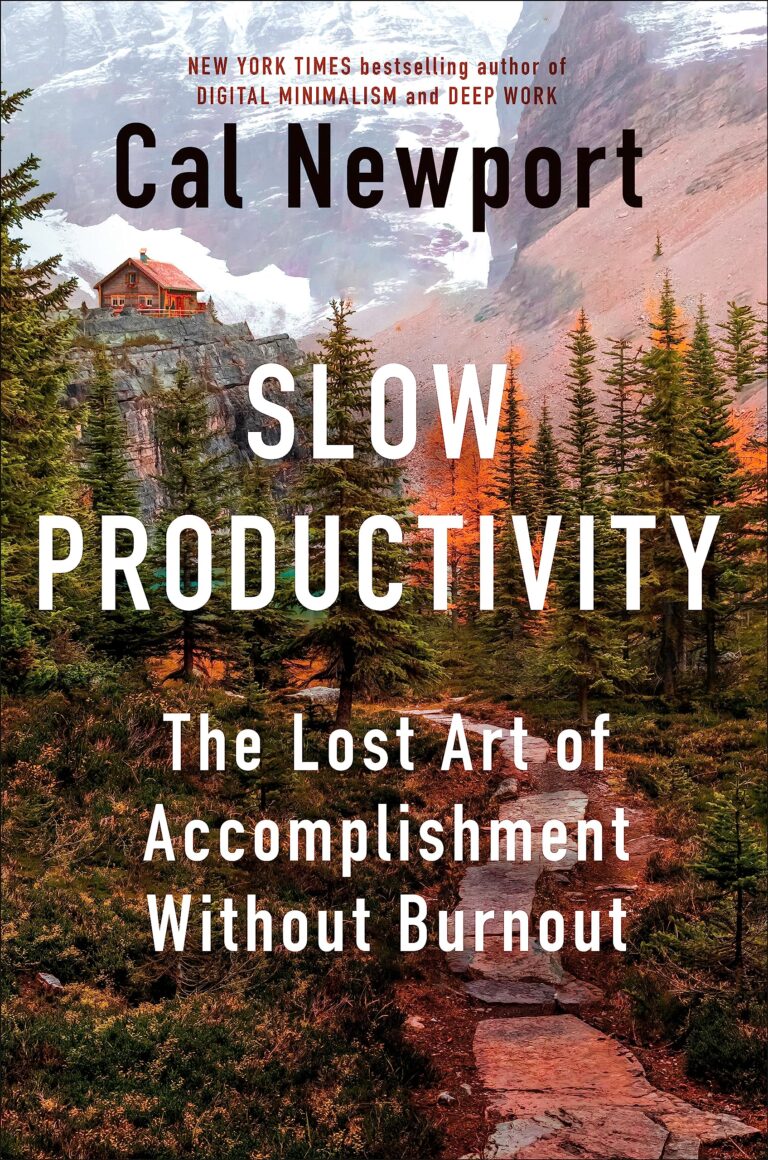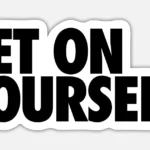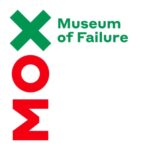Computer Scientist and Best-Selling Author Cal Newport’s books have been very influential in my quest to use technology deliberately and be more productive. His book, Digital Minimalism: Choosing a Focused Life in a Noisy World, was pivotal in my decision to leave/reduce use of social media and Deep Work: Rules for Focused Success in a Distracted World is at the core of the framework by which I work daily. I am a religious listener of his Deep Questions with Cal Newport podcast, where he discusses strategies for cultivating focus, productivity, and meaning amidst the noise that permeates our lives.
In Slow Productivity: The Lost Art of Accomplishment Without Burnout, Cal provides a framework for pursuing meaningful accomplishment while avoiding overload, based on three principles: (1) Do Fewer Things; (2) Work at a Natural Pace; (3) Obsess Over Quality.
Core Idea
- Slow productivity is a plea to step back from the frenzied activity of the daily grind. It’s not that these efforts are arbitrary: our anxious days include tasks and appointments that really do need to get done.
Slow Productivity
A philosophy for organizing knowledge work efforts in a sustainable and meaningful manner, based on the following three principles:
1. Do fewer things.
2. Work at a natural pace.
3. Obsess over quality.
The slow productivity philosophy rejects busyness, seeing overload as an obstacle to producing results that matter, not a badge of pride. It also posits that professional efforts should unfold at a more varied and humane pace, with hard periods counterbalanced by relaxation at many different timescales, and that a focus on impressive quality, not performative activity, should underpin everything.
The Issue
Without concrete productivity metrics to measure and well-defined processes to improve, companies weren’t clear how they should manage their employees. And as freelancers and small entrepreneurs in the sector became more prevalent, these individuals, responsible only for themselves, weren’t sure how they should manage themselves.
Pseudo-Productivity
It was from this uncertainty that a simple alternative emerged: using visible activity as a crude proxy for actual productivity. If you can see me in my office—or, if I’m remote, see my email replies and chat messages arriving regularly—then, at the very least, you know I’m doing something. The more activity you see, the more you can assume that I’m contributing to the organization’s bottom line. Similarly, the busier I am as a freelancer or entrepreneur, the more I can be assured I’m doing all I can to get after it.
Pseudo-Productivity: The use of visible activity as the primary means of approximating actual productive effort.
The Great Resignation – Quite Quiting
Though this phenomenon encompassed retreats from labor force participation in many different economic sectors, among these many sub-narratives was a clear trend among knowledge workers to downgrade the demands of their careers. The Great Resignation was then followed by the rise of quiet quitting, in which a younger cohort of workers began to aggressively push back on their employers’ demands for productivity.
PRINCIPLE #1: DO FEWER THINGS
Strive to reduce your obligations to the point where you can easily imagine accomplishing them with time to spare. Leverage this reduced load to more fully embrace and advance the small number of projects that matter most.
Ongoing Administrative overhead
In knowledge work, when you agree to a new commitment, be it a minor task or a large project, it brings with it a certain amount of ongoing administrative overhead: back-and-forth email threads needed to gather information, for example, or meetings scheduled to synchronize with your collaborators. This overhead tax activates as soon as you take on a new responsibility. As your to-do list grows, so does the total amount of overhead tax you’re paying. Because the number of hours in the day is fixed, these administrative chores will take more and more time away from your core work, slowing down the rate at which these objectives are accomplished.
The advantage of doing fewer things, however, is about more than just increasing the raw number of hours dedicated to useful activity; the quality of these hours also increases. When you approach a project without the hurried need to tend many barely contained fires, you enjoy a more expansive sense of experimentation and possibility. Maybe you’re able to identify a clever new business strategy, devise an elegant algorithm, or come up with a bold advertising campaign that would have eluded you in a more fragmented state of attention.
Focusing intensely on a small number of tasks, waiting to finish each before bringing on something new, is objectively a much better way to use our brains to produce valuable output.
Avoid Task Engines
When selecting new projects, assess your options by the number of weekly requests, questions, or small chores you expect the project to generate. Prioritize options that minimize this number. Most people focus on the difficulty of a project, or the total amount of time it might require. But once you understand the havoc wreaked by an overstuffed to-do list, it makes sense that the task footprint of a project should be taken just as seriously.
WORK AT A NATURAL PACE: The Second Principle of Slow Productivity
- Don’t rush your most important work. Allow it instead to unfold along a sustainable timeline, with variations in intensity, in settings conducive to brilliance.
- Working with unceasing intensity is artificial and unsustainable. In the moment, it might exude a false sense of usefulness, but when continued over time, it estranges us from our fundamental nature, generates misery, and, from a strictly economic perspective, almost certainly holds us back from reaching our full capabilities. A more natural, slower, varied pace to work is the foundation of true productivity in the long term. What follows is a collection of propositions about how you can inject such variation into your current professional situation.
OBSESS OVER QUALITY: The Third Principle of Slow Productivity
- When you concentrate your attention on producing your best possible work, a more humane slowness becomes inevitable:
- Obsess over the quality of what you produce, even if this means missing opportunities in the short term. Leverage the value of these results to gain more and more freedom in your efforts over the long term.
- Doing fewer things and working at a natural pace are both absolutely necessary components of this philosophy, but if those earlier principles are implemented on their own, without an accompanying obsession with quality, they might serve only to fray your relationship to work over time—casting your professional efforts as an imposition that you must tame. It’s in the obsession over what you’re producing that slowness can transcend its role as just one more strategy on the arid battlegrounds of work-life wars and become a necessary imperative—an engine that drives a meaningful professional life.
You should be focused on the quality of what you produce because quality turns out to be connected in unexpected ways to our desire to escape pseudo-productivity and embrace something slower.
Improve Your Taste
The act of creation can be decomposed into a series of spontaneous eruptions of new possibilities, which must then be filtered against some ineffable understanding of what works and what doesn’t—the visceral intuition that we call taste.
Give yourself enough time to produce something great, but not unlimited time. Focus on creating something good enough to catch the attention of those whose taste you care about, but relieve yourself of the need to forge a masterpiece. Progress is what matters. Not perfection.
Bet on Yourself
Betting on yourself need not be as dramatic as losing a record deal or walking away from an Ivy League school. Simply by placing yourself in a situation where there exists pressure to succeed, even if moderate, can provide an important accelerant in your quest for quality.
The goal in betting on yourself is to push yourself to a new level without accidentally also pushing yourself into an unnaturally busy workload.
ATTRACT AN INVESTOR
Attracting other people to invest in you and your idea is a dramatic bet on yourself and your ability to not let others down. In the drive to avoid this disappointment, greatness can be found.
All the best in your quest to get better. Don’t Settle: Live with Passion



Comments are closed.